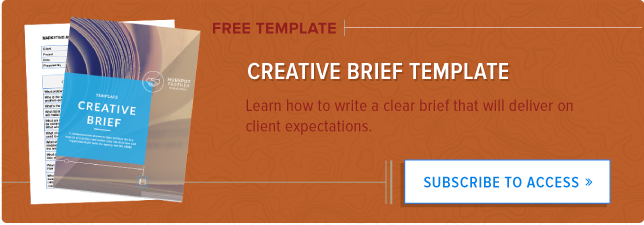
Has this happened to you before? You come up with a great idea for a new project, but when it comes to explaining to your colleagues why it deserves their attention, you just can't seem to generate the necessary excitement or buy-in.
Coming up with a good idea is only half the battle. If you ever want to see your ideas implemented, you need to back up your plan with a stellar argument. As you probably know, this is much easier said than done.
Crafting a compelling argument can seem like an elusive art dominated by the naturally charismatic and extroverted, but it really comes down to a basic awareness and application of what Aristotle called the modes of persuasion.
In the 4th Century BC, the Greek philosopher defined three fundamental types of persuasion techniques:
Ethos refers to arguments grounded in the speaker's credibility, e.g., You are more likely to believe the claim: "This new phone is innovative" if Steve Jobs said it versus if Charlie Sheen said it.
Logos refers to arguments grounded in logic and reason, e.g., "This phone is innovative because it has a battery that was scientifically proven to last 500% longer than any other phone battery on the market."
Pathos refers to arguments that appeal to our emotions, e.g., "This was the last phone Steve Jobs created before his death."
To help you begin developing more engaging, sophisticated arguments, we've taken Aristotle's modes of persuasion and explained how you can best leverage each one. Whether you're pitching a new idea to a client or giving a presentation to your colleagues, these tips will help you take your case up a notch.
Ethos
Give yourself a credibility audit.
Your reputation really does precede you.
Before you even walk into the conference room, your audience will have preconceived notions about you, and about the presentation they're about to receive. What do they currently know about you? What don't they know? Is there anything about your reputation (or your agency's reputation) that could potentially support your argument? Anything that could potentially hurt it?
The degree to which preconceived notions will influence your actual argument depends heavily on the situation at hand, but it's not a bad idea to think critically about the way you initially come across to your audience. You could present an otherwise flawless argument, but if there are any external credibility issues that aren't addressed, you could be looking at an unswayed audience.
Credibility issues aren't always the massive, obvious problems you'd expect. When I say "credibility issue," you probably think of something dramatic, like a history of pathological lying or ponzi scheming. More often than not, credibility issues come in the form of subtle inconsistencies. For example, if you're trying to sell a client on a new SEO strategy, but your agency's website isn't ranking for a single keyword, then you may have a credibility issue on your hands.
So what should you do if you discover a potential credibility issue? Don't panic. You don't need to directly address every potential controversy (your audience probably doesn't want to hear about the time you accidentally threw a plastic cup in a paper-only recycle bin) -- but you should address the ones that are relevant to your argument.
Going back to my earlier example, you should explain why your agency isn't focusing on SEO right now, but point to some examples of other businesses you've helped with SEO.
It's better to control the conversation around potentially touchy subjects than wait for someone in your audience to bring them up on their own. If that happens, you could be looking at an even bigger credibility issue: They might wonder if you were being willfully ingenuous before, and if you're hiding anything else.
Logos
When it comes to supporting facts, focus on quality over quantity.
More evidence equals a better argument, right? Not quite. While it can be tempting to put together a presentation with 15 statistic-heavy slides worth of supporting evidence, this isn't likely to have a powerful impact on your audience. In fact, overwhelming them with an onslaught of facts and figures will probably make them tune out -- even if your facts are all logically sound and supportive of your main premise.
Just because a fact technically lends support to your claim doesn't mean it will sway your audience. The best evidence needs to not only support your claim, but also have a connection to your audience.
Say you're pitching a digital ads project to a small business, and you mention that 25% of Fortune 500 companies have seen a direct sales increase from using full-page mobile ads. Yes, that statistic shows mobile ads can have an impact on sales, but it doesn't connect back to your audience in a meaningful way. Small businesses and Fortune 500 companies don't approach advertising from the same perspective, so this piece of evidence isn't likely to make a compelling case to your audience.
As a general rule, focus on finding a few relevant pieces of evidence to support your claim, rather than a slew of facts with loose ties to your main point. A small handful of strong facts are more likely to stick with your audience than many loose claims, so choose your supporting evidence selectively, always being mindful of the connection back to your audience. If you can't draw a line back to your audience, toss that piece of evidence out of your argument.
Pathos
Focus on the story, not just the logic.
When sitting down to develop an argument, most people fall into the logic trap: They put the vast majority of their time and resources into making sure each of their main points is followed by a list of bullet points to back up their claims. When the presentation rolls around, their audience is uninspired, and the speaker is confused: "Why didn't they love my logically-reasoned and perfectly valid arguments?"
Your audience isn't grading your presentation for logical validity. Don't get me wrong, logic and structure are important to the foundation of an argument -- but they can't stand on their own. To craft a truly compelling argument that incites action from your audience, you need to inject a hefty dose of emotion and narrative. Good storytelling is what separates impactful arguments from mediocre ones.
You might be thinking: "But I'm writing a budget proposal -- how am I supposed to make an emotionally-appealing narrative out of that?"
It's actually a lot less complicated that you'd expect. Start by sketching out a simple emotional map of your presentation. How will your audience feel before the presentation even begins?
Maybe you know morale has been low lately at your agency, and the team needs a reason to feel optimistic about the future. Maybe you know that your budget proposal presentation isn't a hotly anticipated meeting, and you need to give your audience something to get excited (or even just mildly amused) about.
Identifying the preexisting mood of your audience will help you figure out what emotions you'll need to incite to keep their attention and pull them into your story. Once you've figured out how they'll feel at the outset, determine how you want them to feel at the end. What emotions will make them more likely to support your argument? What story can you tell to lead them towards these emotional conclusions?
For example, if you're pitching a website redesign project and you know that the client doesn't currently think it will make a difference to their marketing efforts, you'd want to incite excitement and optimism in your presentation.
To do this, you could weave in a narrative that focuses on how the website redesign will lead towards a better future for the client's business. It's not about forcing a narrative onto your facts, it's about finding the story that already exists and running with it.
Know Your Audience and Setting
So how do you know when to appeal to ethos, pathos, or logos? The key is understanding your audience, and considering what form of appeal is most likely to resonate with them at that particular time and place.
Don't stress about including all three modes of persuasion in every presentation. Feel out your audience beforehand and determine which types of arguments are most likely to appeal to them in the given setting. For example, a budget meeting will definitely call for some strong logical appeals, but adding in an emotional appeal might beef up your claims and result in a more compelling claim. It's all about striking the right balance of appeals for your particular audience and circumstances.
from HubSpot Marketing Blog http://blog.hubspot.com/marketing/compelling-argument-not-naturally-persuasive
Via http://blog.hubspot.com/marketing/compelling-argument-not-naturally-persuasive

No comments:
Post a Comment